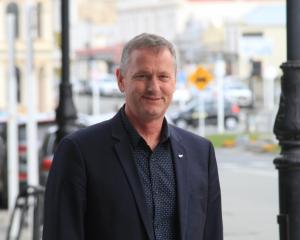
The compulsory review, held every six years, involved the council putting forward a consultation proposal to keep the current set-up of 10 councillors and two community boards.
After deliberations on the 11 submissions in a council hearing last week, a report will now go to the next full council meeting on October 22 recommending the "status quo".
Cr Jim Hopkins, speaking at the September 10 hearing, wondered if the "the relative lack of engagement" might be assumed to reflect happiness by a majority of Waitaki’s 24,000 residents.
Cr John McCone said submitters "did make some relevant points", regardless of whether they were happy with the council or not.
Mayor Gary Kircher said despite the compulsory quantum for individual ward representation, councillors were to represent the whole community.
"At the beginning of term we swear an oath to serve on behalf of the [whole] community."
On the other hand, if the council had issued a radical proposal for change, as Clutha District Council had done, it might have "provoked more people to make some submissions," he said.
Clutha was proposing to slash elected councillors from 14 to a more efficient nine, Mr Kircher said.
A report to the hearing on the 11 submissions noted this more than doubled those received for the last review in 2018.
In that time, Waitaki District’s population had grown by nearly 10% , mainly in the two rural hinterland wards.
Notably, the Ahuriri Ward which includes Kurow, Otematata and Omarama has grown by 17.8% since 2018. Corriedale, covering the lower Waitaki Valley and the rural zone south to Herbert, increased 11.6%.
The status quo proposal would mean Waitaki keeping a mayor, elected at large, and 10 councillors across four wards: Oamaru (6), Corriedale (2), Ahuriri and Waihemo, one councillor each.
The Waihemo and Ahuriri community boards, each comprising five elected members and one appointed ward councillor, would remain.
Key submission themes in the submissions, presented last Tuesday were—
- Some felt six, seven, or eight councillors was enough but there was also a call for more councillors and no community boards.
- One submitter called for "a stronger voice" for rural wards, in reference to the current district plan process which proposes the likes of Significant Natural Areas over private land.
- Reflection on "a perceived lack of consultation" for Kakanui matters leading to "less than optimum representation" also came through.
- There was a suggestion the entire district should vote as one population.
- Support for the existing wards "in the face of regional differences" was also a theme and the majority supported the existing two community board structure.
- Having "a rural advocacy group" was also suggested.
- Other ideas included amalgamating the Waihemo Ward (centred on Palmerston) with Dunedin City Council because that ward was "more closely aligned" to Dunedin than Oamaru.












